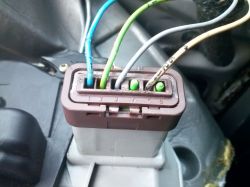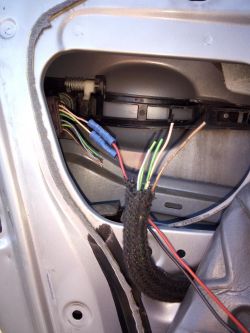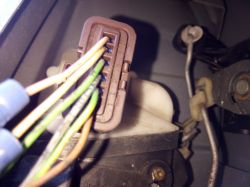Hello all. I am asking you specialists for help in solving the problem which I noticed 2 days ago in my car (it is a 5 door Peugeot). The problem concerns the factory central lock of the right front door that does not close either with the key or the button on the dashboard just next to the button from the hazard lights, or also by turning the key in the door handle from the driver.
After pressing the key or button on the board all doors except the mentioned ones close, while after opening the door with the handle, the central door opens all other locks. During the central activation, the characteristic operation of closing and opening the locks can be heard in all doors, while these works cannot be heard. I noticed that during the central closing on the button on the board the red diode pulsates all the time, which was certainly not before. Today, I removed the lock from the door for inspection, but rather it is not demountable, so maybe it is possible to check the lock itself on a separate power supply if the mechanism is working at all to exclude its failure and go on to further searches. 6 pins come out of the cube in the castle, maybe applying voltage to one of the pins will start a motor there.
Maybe someone from colleagues will help or guide what to do with this trick where to check the tension or make other measurements on the connecting cube. Maybe some diagram that will help me orient myself where and where the cables are going and whether the fault lies in the mechanism or in the installation.
Thank you in advance ..
After pressing the key or button on the board all doors except the mentioned ones close, while after opening the door with the handle, the central door opens all other locks. During the central activation, the characteristic operation of closing and opening the locks can be heard in all doors, while these works cannot be heard. I noticed that during the central closing on the button on the board the red diode pulsates all the time, which was certainly not before. Today, I removed the lock from the door for inspection, but rather it is not demountable, so maybe it is possible to check the lock itself on a separate power supply if the mechanism is working at all to exclude its failure and go on to further searches. 6 pins come out of the cube in the castle, maybe applying voltage to one of the pins will start a motor there.
Maybe someone from colleagues will help or guide what to do with this trick where to check the tension or make other measurements on the connecting cube. Maybe some diagram that will help me orient myself where and where the cables are going and whether the fault lies in the mechanism or in the installation.
Thank you in advance ..






